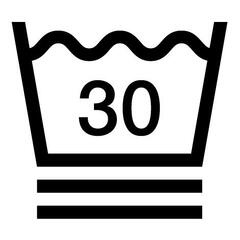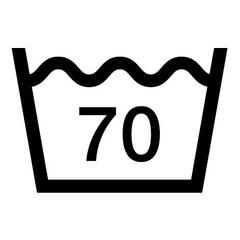QUECHUA
Ref.
8649068
4333260
Women’s Hiking Fleece Jacket - MH520 Hood
€42.00
Tax included
Store Availability
Store Availability
At the foot of the Mont Blanc, our team of hikers designed this stretchy and breathable warm fleece jacket for regular mountain walking.
BENEFITS

Easy maintenance
Machine-washable at 40°C maximum
Lightweight
475g in size M
Freedom of movement
Stretch fabric (5% elastane) for perfect ease of movement
Warmth
2 inner fleece materials insulating from the cold, 300 g/sqm. High collar & hood
Pockets
2 closed hand pockets for safely carrying your personal belongings
Breathability
Knit allows water vapour generated by the body to escape. Built-in zipTECHNICAL INFORMATIONS
Cut
This fleece jacket has a fitted cut. We recommend you wear a technical undergarment, in direct contact with the skin, to be better protected from the cold.
It has also been designed to be worn just underneath our windproof/waterproof jackets like the women’s MH500.
It has also been designed to be worn just underneath our windproof/waterproof jackets like the women’s MH500.
HOW DOES THE MATERIAL INSULATE YOU FROM THE COLD?
The fleece component is designed to trap air in the space formed by its texture (qualified as "brushed fleece” when it is made of pile fabric); this air acts as a natural insulator, keeping the body warm.
HOW IS WARMTH MEASURED?
2 types of tests are carried out to measure the warmth level of our fleeces:
- a material test
- a test on a thermal dummy in a thermal chamber. Here, we reproduce the temperature, wind (5 km/h) and humidity conditions you encounter in the mountains during a 5 km/h walk
These tests are used to validate our design choices, and everything is then validated by field testers.
This fleece has a comfort temperature between 7 and 10°C (without a jacket on top).
- a material test
- a test on a thermal dummy in a thermal chamber. Here, we reproduce the temperature, wind (5 km/h) and humidity conditions you encounter in the mountains during a 5 km/h walk
These tests are used to validate our design choices, and everything is then validated by field testers.
This fleece has a comfort temperature between 7 and 10°C (without a jacket on top).
HOW IS DURABILITY MEASURED?
We test the ageing of our hiking fleeces to guarantee:
- resistance to wear from backpacks and moving arms to delay the appearance of pilling
- the solidity of seams
- the durability of the fleece material after washing
- colour-fastness after washing, against UV rays or in contact with perspiration
- resistance to wear from backpacks and moving arms to delay the appearance of pilling
- the solidity of seams
- the durability of the fleece material after washing
- colour-fastness after washing, against UV rays or in contact with perspiration
Product design: our expertise
Our Quechua global design centre is based in Passy, at the foot of Mont-Blanc in Haute Savoie.
This location makes it a real meeting place for our teams (designers, product managers, engineers, etc) and outdoor sports enthusiasts.
A great asset for designing quality products for your mountain hikes, and providing you with all our expertise.
This location makes it a real meeting place for our teams (designers, product managers, engineers, etc) and outdoor sports enthusiasts.
A great asset for designing quality products for your mountain hikes, and providing you with all our expertise.
composition
composition
Main fabric: 5.0% Elastane, 95.0% Polyester; Underarm fabric: 6.5% Elastane, 93.5% Polyester; Lining: 20.0% Elastane, 80.0% Polyester; Pocket: 100.0% Polyester
Tips for storage and maintenance
 ANY TYPE OF IRONING ALLOWED.
ANY TYPE OF IRONING ALLOWED.
 MAXIMUM WASH TEMPERATURE OF 30°C. VERY MODERATE TREATMENT.
MAXIMUM WASH TEMPERATURE OF 30°C. VERY MODERATE TREATMENT.
 IRON AT A MAXIMUM SOLEPLATE TEMPERATURE OF 150°C.
IRON AT A MAXIMUM SOLEPLATE TEMPERATURE OF 150°C.
 MAXIMUM WASH TEMPERATURE 70°C. NORMAL TREATMENT.
MAXIMUM WASH TEMPERATURE 70°C. NORMAL TREATMENT.
 IRONING AT A MAXIMUM IRON SOLEPLATE TEMPERATURE OF 200°C.
IRONING AT A MAXIMUM IRON SOLEPLATE TEMPERATURE OF 200°C.
TESTS AND WARRANTY
Test product
Our Decathlon Sportslab laboratory, based in Lille, also contributes to the innovation and development of our Quechua products. It brings together 4 themes, each with their own area and technological tools:
Body shape (3D analysis in particular)
Movement science
Thermal comfort (with its four climatic chambers)
Behavioural and sensory sciences
Warranty
2 Years
Agree by
To meet your requirements, Quechua products are tested in the mountains in conditions you will encounter during your hikes.
Louis, our field test engineer, as well as a tester panel (made up of partners, ambassadors and customers) test products throughout their development until they go to market.
Videos
Ecodesign approach
With ecodesign, we reduce the environmental impact of our products.
Analysing the product's environmental footprint enabled us to identify the most impactful stages of its life cycle. Thanks to this approach, our design teams were able to develop this product while significantly reducing its environmental impact.
Ecodesign actions on this product
-
 Process
ProcessDope dyed
Product made from 63% dope dyed yarn
Using this mass-dyeing process enables us to reduce CO2 emissions linked to the production of dyed textiles by at least 46% compared to conventional dyeing.
-
 Material
MaterialRecycled polyester
Product made from 22% recycled polyester
Using recycled polyester rather than conventional polyester reduces the CO2 emissions linked to the material by at least 16%.